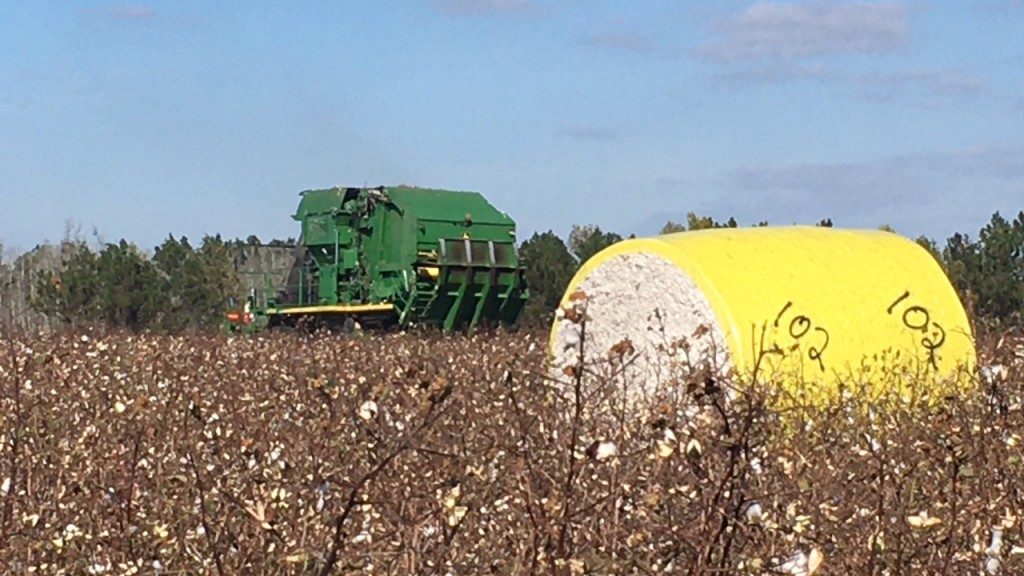The 2025 cotton season is upon us and some of the most important decisions growers can make to protect their crop from nematodes and diseases can only be made BEFORE the furrow is closed. Once the furrow is closed, the grower watches from the sidelines as the cotton crop battles nematodes, seedling disease, Fusarium wilt, and bacterial blight. The most important tactics to protect a cotton crop from these maladies are over when the furrow is closed. If this message seems familiar to you, it is because it is something I have repeated many times. Though you may grow tired, the message remains as important now as it ever was.Seedling diseases are a significant threat to cotton production in Georgia and will result in significant stand loss if not effectively managed. The vast majority of seedling diseases are caused by fungal pathogens, especially Pythium (pre-emergent damping off) and Rhizoctonia solani (post-emergent “soreshin”). Key tactics to minimizing risk to seedling diseases include:
1. Avoid planting into soils that are not 65°F or warmer.
2. Do not plant if wetter and cooler temperatures that could significantly drop soil temperatures arein the forecast in the upcoming 7 days.
3. Ensure that seed is adequately protected with a seed treatment that included a combination offungicides to protect against Rhizoctonia, Pythium, and other fungal pathogens.
4. When growers will plant into a field where risk to seedling disease is increased, e.g. short cottonrotations or conservation tillage, consideration should be given to use of additional seed treatmentsor in-furrow fungicides.
Nematodes will always be a threat to cotton production in Georgia. Decisions made at planting could easily be the difference between a profit and a loss in a specific field or in multiple fields. Key tactics to protecting a crop against nematodes include:
1. Consider rotation with peanuts to reduce risk to nearly all nematodes that affect cotton. Plantingcorn in rotation with cotton can reduce risk to reniform nematodes.
2. Pull soil samples at harvest in the previous season to have a “heads up” for the types of nematodesand the population size of parasitic nematodes waiting for the next cotton crop. Knowing “what”and “how many” will allow growers to make the most informed decisions.
3. Where a field is infested with southern root-knot or reniform nematodes, growers should recognizethat they have the opportunity to plant resistant varieties. A nematicide is not needed where rootknot nematode varieties are planted in a root-knot infested field. It is unlikely that nematicides willbe needed when a reniform nematode resistant variety is planted into a reniform-infested field. Ifsting or Columbia lance nematodes are present, resistant varieties are not available and the onlymanagement tool is to use a nematicide.
4. Where a resistant variety is not planted into a field infested with plant-parasitic nematodes(southern root-knot, reniform, sting, or Columbia lance), growers are advised to consider using a nematicide to protect the crop. Fumigation with Telone II (3 gal/A) is the most aggressive treatment. Next would be AgLogic 15G (5-7 lb/A), Velum (6.5-6.8 fl oz/A), AVERLAND FC (3.5fl oz/A) and OUTREACH, followed by nematicide seed treatments to include Copeo, Avicta, and BIOst.Fusarium wilt is a serious problem in specific fields.
Fusarium wilt results from the interaction between the Fusarium fungus and nematodes which damage the cotton crop. The damage from the nematodes allows the fungus to infect the roots of the cotton plant. To best manage Fusarium wilt disease, growers must effectively manage nematodes in the field, often with a nematicide.
Bacterial blight has not been a significant problem in Georgia over the past few years; however this disease can cause yield loss in specific fields. The only effective management strategy for bacterial blight is to plant a disease-resistant variety.
Approximately five months after cotton is planted, the cotton is harvested. Five months is a long time. But five months can seem even longer if the crop is not adequately protected from diseases and nematodes on the day that the furrow is closed. Make your decisions carefully.
